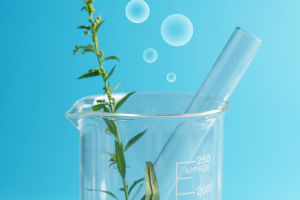Rape not only has high nutritional value, but also beautiful scenery that is hard to ignore when it blooms. The planting of rapeseed flowers is relatively complicated, mainly in the following steps:
1. The demand for soil during the growth period of rapeseed
Rape is a taproot plant and has strong adaptability. It can grow in sandy soil, clay soil, and red-yellow soil. Of course, the soil is deep and fertile, which is more conducive to the growth of rapeseed.
2. The temperature requirements for rapeseed growth
Rapeseed is a crop that likes cool climates and has strong resistance to damage. Rapeseed seeds can germinate at a low temperature of 3 to 4 degrees, but the most suitable temperature for rapeseed seeds to germinate is 20 to 25 degrees, and the highest temperature is 36 to 37 degrees.
In the seedling stage of rapeseed, the most suitable temperature for growth is 26 degrees. If the temperature is lower than 4 degrees, or higher than 36 degrees, it is not conducive to the growth of rapeseed seedlings.
When the rape is in the flowering stage, the suitable temperature is 14-18 degrees, and the most suitable temperature for the silique development period is 12-15 degrees.
3. Water growth requirements for rape growth
During the growth of rapeseed, the demand for water varies in each growth stage. In the seedling stage of rapeseed, there are few roots and leaves, and the demand for water is not large.
The moisture of the field soil is kept at 70% to 80% throughout the seedling stage. During the bolting period, rapeseed is in the most vigorous period of growth and development.
During this period, the moisture of the field soil needs to be maintained between 75% and 85%. And rape to the flowering and fruiting period, because the fruit began to increase, the field soil moisture should still be maintained at 70% to 80%.
4. The demand for fertilizers during the growth period of rapeseed
Canola is a fertilizer-loving crop, with varying fertilizer requirements throughout the growing period. In the seedling stage of rapeseed, the growth period is generally 35 to 40 days.
In addition to applying sufficient basal fertilizer before sowing, when there are 2 to 3 true leaves after the emergence of rapeseed, a top dressing is carried out to ensure that the seedlings have sufficient nutrients to cultivate a robust seedling.
After the rapeseed is transplanted and planted, the seedling stage will go through a two-month low-temperature period. At this time, it is necessary to apply nutrient-element fertilizer to the rapeseed.
The rape bolting stage is a critical period for the vegetative growth and reproductive growth of rapeseed. During this period, it is necessary to ensure an adequate supply of nitrogen, phosphorus, and potassium fertilizers.
While rapeseed is in the mature stage of silique development, rapeseed has a large demand for phosphorus fertilizer. When fertilizing, it is not necessary to apply more nitrogen fertilizer and ignore phosphorus fertilizer.
When rapeseed flowers bloom, a large piece of golden yellow is very eye-catching, so are rapeseed flowers edible?
1. Because rapeseed flowers are wild in the open air, parasites such as eggs cannot be avoided. Everyone must pay attention to this.
2. Do not eat rapeseed flowers that are fully opened. At this time, the seeds will produce sinapine and tannin, which are harmful to the body.
3. The flowers can be eaten before they are fully open.
In addition, the flower language of rapeseed means hope and elevation, and it can still live tenaciously in harsh environments, implying strong vitality.


